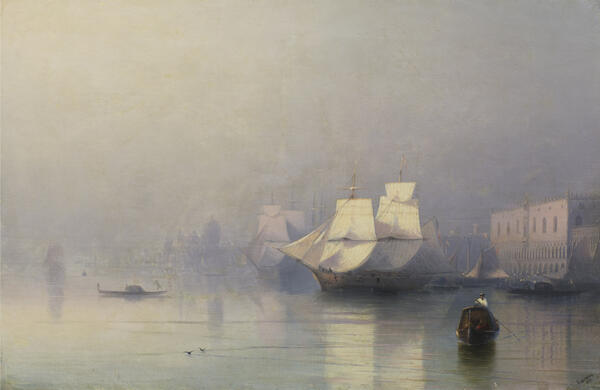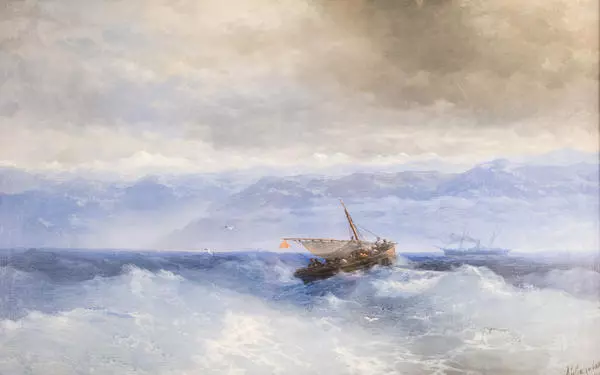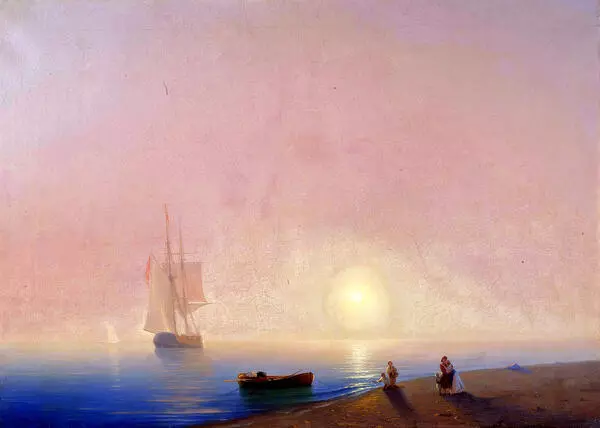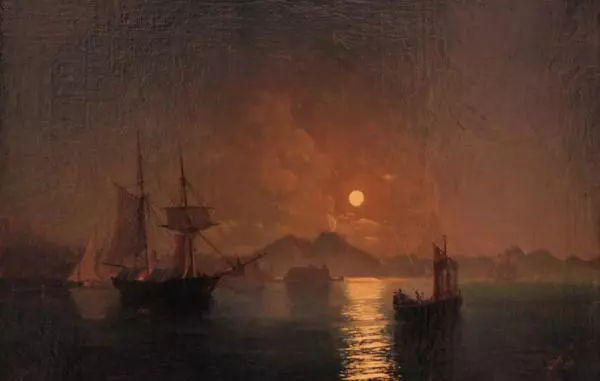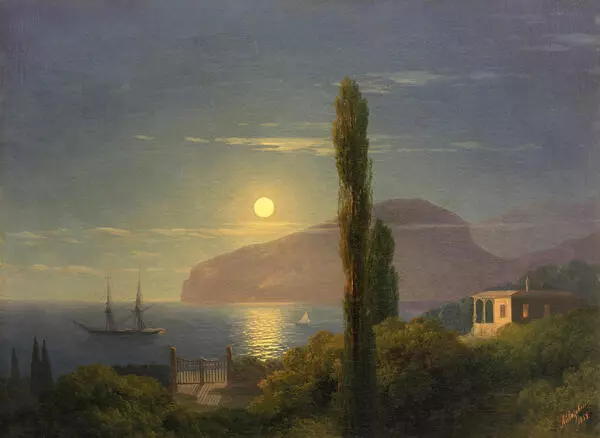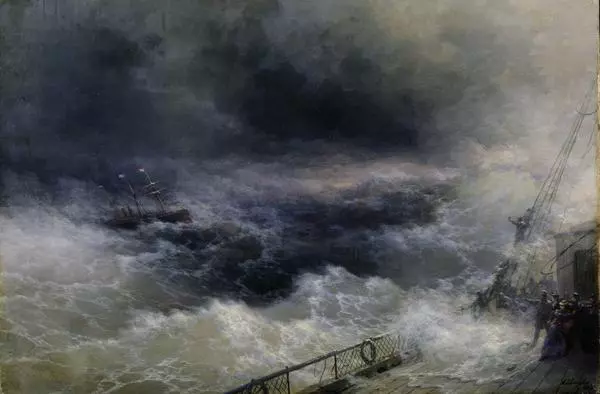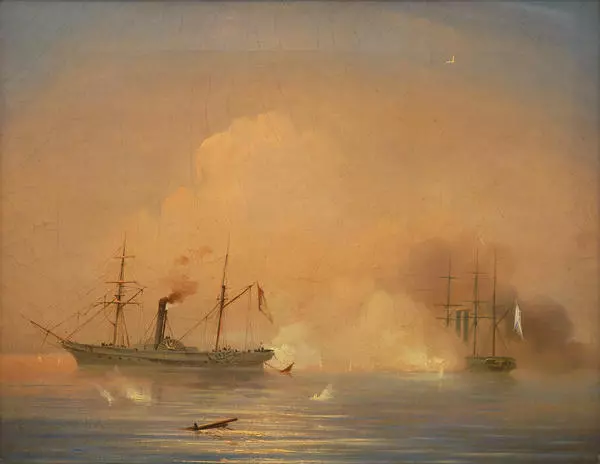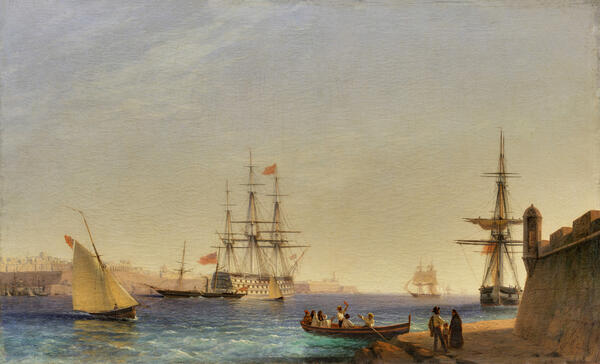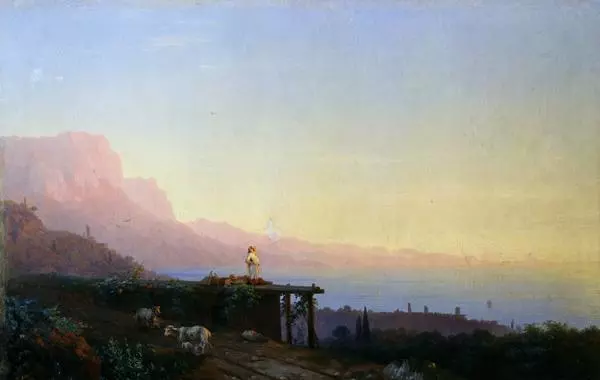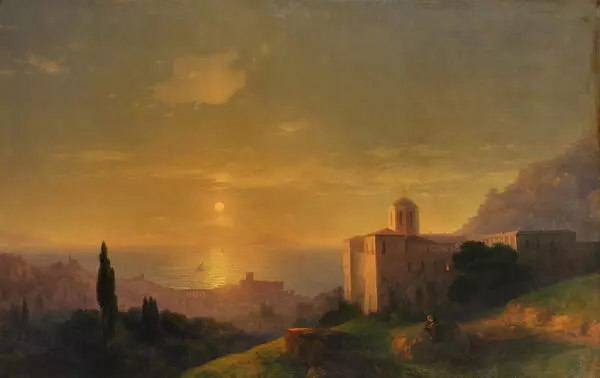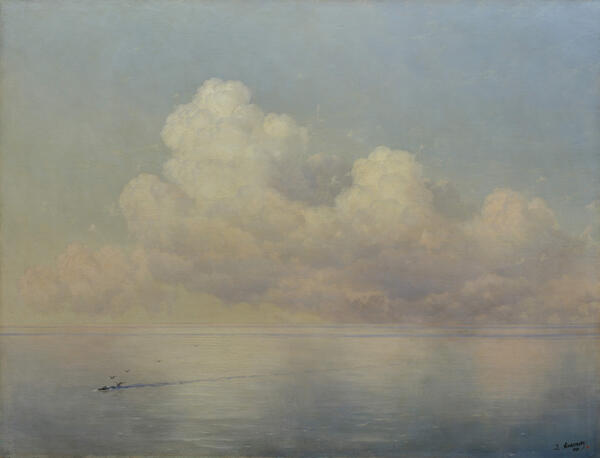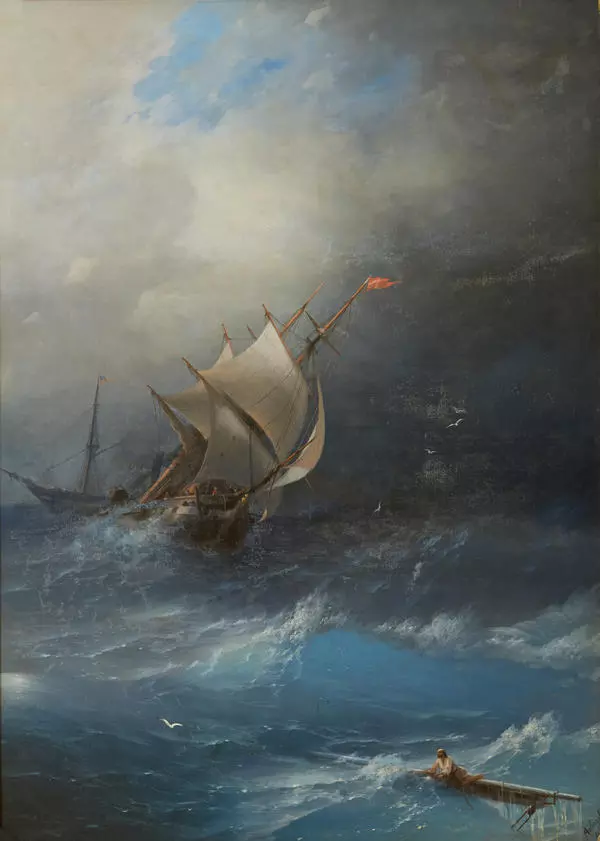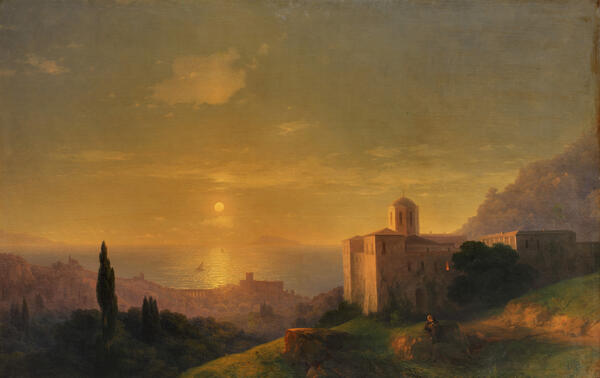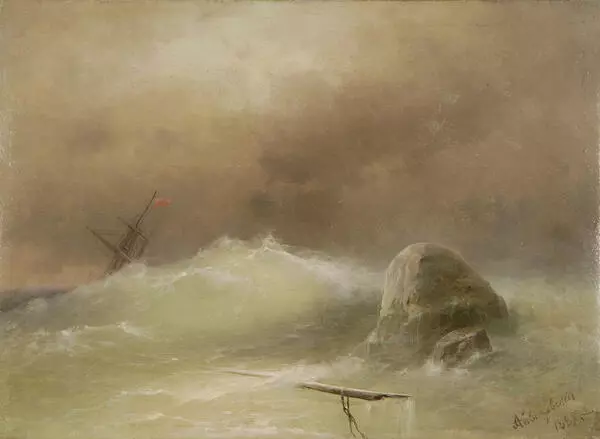Ivan Aivazovsky was born in the town of Feodosiya, Crimea, into a merchant’s family. Having spent his early years by the Black Sea, the artist developed deep understanding of the ways the marine landscape could look. The beauty of the Crimean coast became a source of creative inspiration for the future seascape painter.
Aivazovsky lived a long, eventful life, full of impressions from his trips to different parts of the world. In 1840, the young painter went to Europe to hone his skills. During this journey, he developed his own creative process and learned to paint from memory. Initially, Aivazovsky lived and studied in Italy, mentioning it afterwards and saying, “My beginning was illuminated by this country.” The paintings depicting Venice, Florence, Naples and other Italian cities brought him remarkable success.
The seascapes of Ivan Aivazovsky vary in color and mood, ranging from bright dynamic images to fine tranquil scenes. The Irkutsk Art Museum houses ten works by Aivazovsky: five paintings and five graphic works. “Morning in Venice” (1875) is the highlight of the museum collection. Most likely the painting was bought by Alexander Sibiryakov, a famous Irkutsk businessman and philanthropist, at an art exhibition in St. Petersburg. Two years later, he donated the painting to Irkutsk Men’s Classical Gymnasium in his hometown. In 1920, the painting entered the art gallery of the city museum. Later on, the gallery’s collection formed the basis for the newly created Irkutsk Art Museum.
“Morning in Venice” is among the pieces painted in the 1870s. At that time, Aivazovsky started creating refined paintings that resembled watercolors, along with the pictures featuring mysterious night landscapes or bright, dynamic scenes that were typical in the earlier period of his career. The painter used the finest color shades to convey the experience of the early morning.
The story of the painting was tragic — over time the thin layer of paint began to crumble away. The work was twice sent to the Grabar Art Conservation Center in Moscow — all in vain since the paint layer continued to deteriorate. The painting was saved by Galina Muravyova, museum employee, who had been involved in the restoration process for more than 20 years and completed the work in 2009 — by the bicentennial of Ivan Aivazovsky.
Aivazovsky lived a long, eventful life, full of impressions from his trips to different parts of the world. In 1840, the young painter went to Europe to hone his skills. During this journey, he developed his own creative process and learned to paint from memory. Initially, Aivazovsky lived and studied in Italy, mentioning it afterwards and saying, “My beginning was illuminated by this country.” The paintings depicting Venice, Florence, Naples and other Italian cities brought him remarkable success.
The seascapes of Ivan Aivazovsky vary in color and mood, ranging from bright dynamic images to fine tranquil scenes. The Irkutsk Art Museum houses ten works by Aivazovsky: five paintings and five graphic works. “Morning in Venice” (1875) is the highlight of the museum collection. Most likely the painting was bought by Alexander Sibiryakov, a famous Irkutsk businessman and philanthropist, at an art exhibition in St. Petersburg. Two years later, he donated the painting to Irkutsk Men’s Classical Gymnasium in his hometown. In 1920, the painting entered the art gallery of the city museum. Later on, the gallery’s collection formed the basis for the newly created Irkutsk Art Museum.
“Morning in Venice” is among the pieces painted in the 1870s. At that time, Aivazovsky started creating refined paintings that resembled watercolors, along with the pictures featuring mysterious night landscapes or bright, dynamic scenes that were typical in the earlier period of his career. The painter used the finest color shades to convey the experience of the early morning.
The story of the painting was tragic — over time the thin layer of paint began to crumble away. The work was twice sent to the Grabar Art Conservation Center in Moscow — all in vain since the paint layer continued to deteriorate. The painting was saved by Galina Muravyova, museum employee, who had been involved in the restoration process for more than 20 years and completed the work in 2009 — by the bicentennial of Ivan Aivazovsky.

